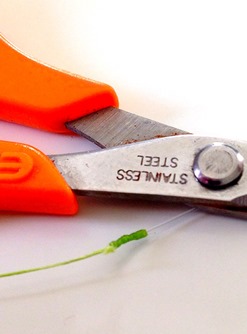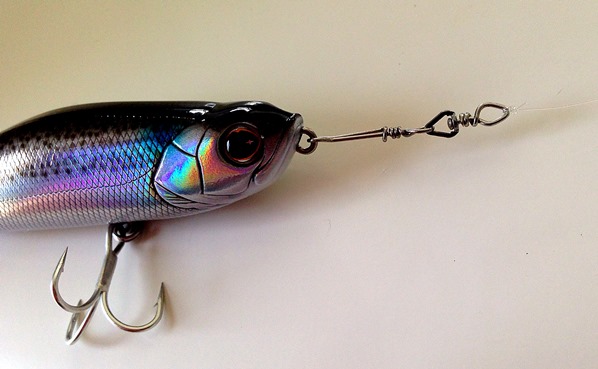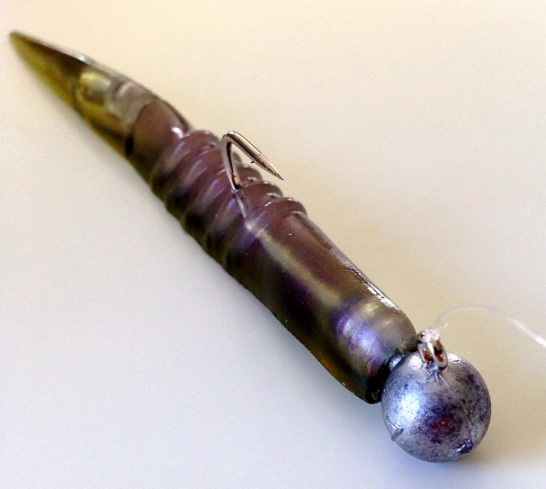Some very good lure anglers (with a lot of quality bass under their belts) like to fish braid straight-through. Some very successful anglers like to fish mono straight-through. There seems to be a very large proportion of Bass anglers using a combination of braid & a fluro (or mono) leader material though. New recruits to the sport might wonder what the differences are, and the relative benefits of each method.
Mono / flurocarbon straight-through: This is a nice cheap simple solution. Spools of mono are inexpensive to buy, and are relatively trouble-free. A simple knot to the lure (or to a lure clip) is all that’s required, & arguably the mono provides good cushioning for a strong fighting fish. The possible downside is that the ‘give’ of mono means that you have less ‘feel’ when using it in comparison to braid.
Braid straight-through: Braided lines have been one of the big development areas in angling over the past few years. The lack of stretch in the braid means that the angler has a very ‘direct’ contact with the lure, & can feel the more subtle movements of the lure through the water. In addition, the lower diameter of braid compared to the same breaking strength of mono, means that it cuts through wind & tide better. By fishing straight-through, it can provide a very strong link to the fish. The downside can be the loss of a certain amount of stealth, as the braid is likely to be fairly visible to the Bass. But maybe that doesn’t matter ? Also, some anglers feel that there’s a risk of losing a Bass when being ‘reefed’ by a fish (meaning that during the fight, the braid rubs against the reef, & will part more easily than a fluro or mono line).
Braid with a leader: There are different schools of thought on this. Firstly, there is a need to make the join between the braid and the leader material strong. There are some knots that are suited to this, & a dab of glue on the knot can increase strength even further. Also, there’s the option to use a small metal ‘o’ ring for the join, which can provide a simple solution, but you just have to be careful not to retrieve that metal ring through your rod tip, as it could damage the tip eye on your rod.
Next question is ‘what length of leader’. Many people use it as a ‘rubbing leader’, meaning that it’s just there to provide some abrasion resistance when playing a fish over a reef. 2’ to 3’ would probably be a typical length for this. Others however believe that a long  leader can increase catch-rates when the water is clear, or in areas where the fish are wary. 10’ or 12’ leaders can be used. The watch-out with such a long leader is that it means taking the leader knot through the eyes of the rod, which can weaken the knot during the session.
leader can increase catch-rates when the water is clear, or in areas where the fish are wary. 10’ or 12’ leaders can be used. The watch-out with such a long leader is that it means taking the leader knot through the eyes of the rod, which can weaken the knot during the session.
The potential benefits of fishing braided main-line with a mono/fluro leader are that you get the best of both worlds. You get increased casting distance, less wind resistance, & a more direct feel, with some element of stealth at the business end, & some abrasion resistance. The potential downsides are that you are introducing a weak-link (the knot) in your set-up, and that you are adding cost & complexity to your set-up. Tying a new leader-knot in a howling wind can be challenging, as the knots are relatively intricate.
This is a subject where there is no ‘right or wrong’, it’s just down to angler preference, conditions & which compromise the angler wishes to make.
We’d be interested to hear the thoughts of our Blog readers on this topic, & any experience that people would like to share …..

